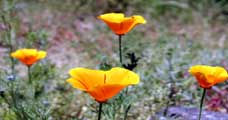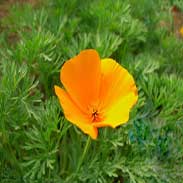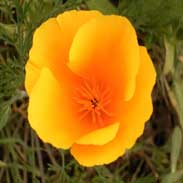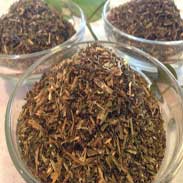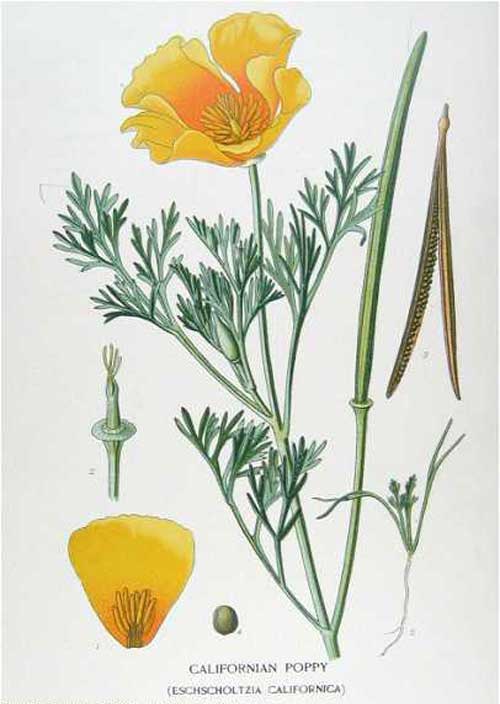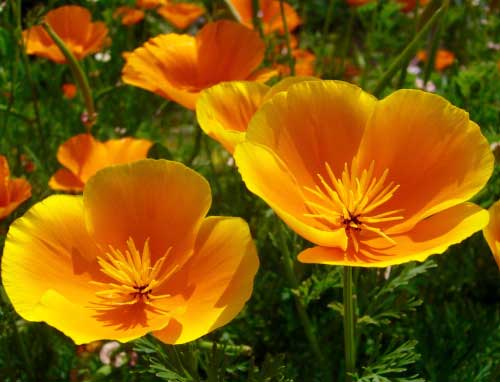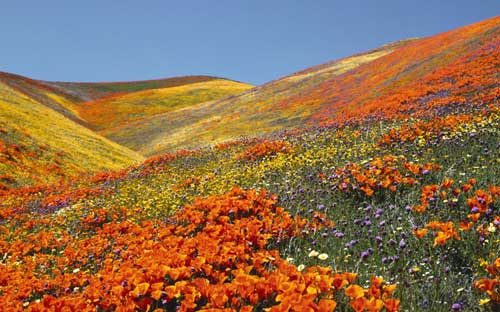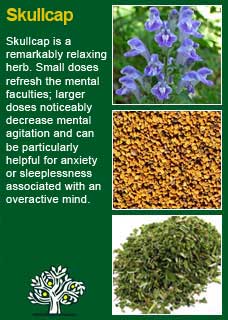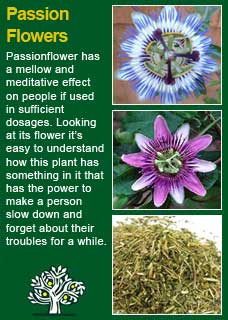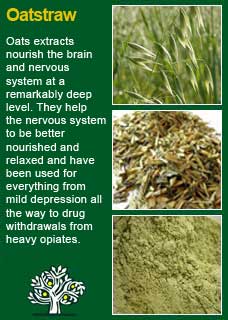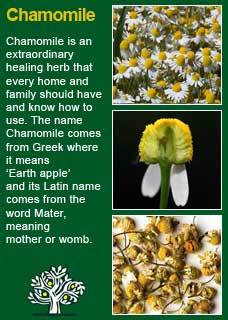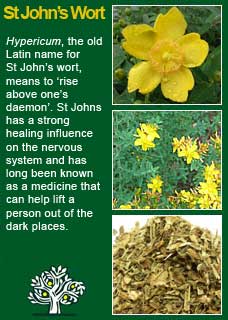
|
|
||||
| Our Pages ABOUT CONSTITUTIONAL MEDICINE
|
In herbal medicine, we use all the dried aerial parts (leaves and flowers) of the beautiful Californian poppy, a herb that, as the name suggests, is the official state flower of California and is native to that area as well as to Mexico. Californian poppy is a drought-resistant herb that can be a perennial but grows best as an annual up to 1.5 metres in height and doing well with full sun in dry, sandy, drained and poor soil.
Native American tribes used the leaves and flowers, of Californian poppy for their sedative and pain-relieving properties and for the relief of toothache, especially in children. Thomas Bartram desribes Californian poppy's actions as hypnotic (sleep inducing), sedative, nerve relaxant and anodyne (pain-relieving) and recommends it for insomnia, migraines, stressful conditions, nervous bowel, anxiety, depression and neuralgia (nerve pain). He says it combines well with Passionflower for in equal parts for hyperactivity and sleeplessness and suggests doses of a tsp to a cup of boiling water. Rudolph Weiss writes that 'like the opium poppy, it contains a number of alkaloids with hypnotic and sedative effects, for example protopine, cryptopine, and chelidononine, however the overall effect is mild, generally more balancing, and non-narcotic. It can be prepared as a tea (1 tsp per cup) and is tolerated well, even by children, where it is most commonly prescribed for treatment of childhood neuropathy (nerve pain) but also for nocturnal enuresis' (bed-wetting) Californian poppy has traditionally been used for reducing pain and helping to promote calm sleep without the dangers of the more powerful opiates of the Opium poppy. Its muscle relaxing actions has seen it be especially used for children to help with the pain of colic or whooping cough. It was of interest to medical practitioners in America in the late 19th century and was described in 1892 as 'an excellent soporific (sleep inducing) and analgesic (pain-relieving), which is above all harmless. The effect produced by Californian poppy is the same as that of morphine, without the inconvenience of the latter drug.'
~ Californian poppy, like the opium poppy, contains a number of isoquinoline alkaloids. These include such potent chemicals as californidine, eschscoitzine, allocryptopine, protopine, papaverine and noscapine. Although the narcotic effect of Californian poppy is much less potent than that of morphine or codeine it will still have pronounced sedative and hypnotic (sleep inducing) effects when taken in sufficient dosages. In moderate amounts, it can be seen to be non-sedating but still able to relieve neuralgia (nerve-pain). ~ The use of Californian poppy in two controlled clinical trials showed that it could normalise disturbed sleeping behaviour without any evidence of carry-over effects or addiction. (Schafer HL et al: Arzneim Forsch 45(2): 124-126, 1995) ~ A study combining California Poppy with Crataegus oxyacantha and measured against placebo in 264 patients with diagnosed General Anxiety Disorder of mild to moderate intensity over a period of three months showed statistically significant benefits associated with all parameters of Anxiety (assessed by Hamilton Anxiety Scores) on day 14, 60, and 90 (Hanus M, Lafon J, Mathieu M Double-blind, randomised, placebo-controlled study to evaluate the efficacy and safety of a fixed combination containing two plant extracts (Crataegus oxyacantha and Eschscholtzia californica) in mild-to-moderate anxiety disorders . Curr Med Res Opin 2004) ~ A large single dose of Californian poppy (6.7 grams of herb - about 2 heaped tsps) was shown to cause a distinctive change in electroencephalograph recording (EEG) compared to readings obtained by placebo. (Schultz H, Jobert M, Hubner WD: Phytomed 5(6):449-458, 1998) Some further pharmacological (laboratory) research includes ~ A sedative effect was observed for Californian poppy extract after injection and from high oral doses in experimental models in terms of both behavioural effects and promotion of sleep. The sedative and anxiolytic (anxiety reducing) are most likely linked to benzodiazepine-receptor activation because they were antagonised (blocked) by the benzodiazepine-receptor antagonist flumazenil in vivo (by injection). ~ Californian poppy extract inhibits the enzymatic degradation of catecholamines and the synthesis of epinephrine (adrenaline) in vitro. Preserving high levels of catecholamines may explain the sedative and antidepressant activity of Californian poppy. ~ An extract of Californian poppy (80%) and Corydalis (20%) has demonstrated the ability to interact with opiate receptors in vitro, which may explain its analgesic activity ~ The authors, titles and the 'where-and-when' published of a small handful of further studies and articles on Californian poppy are listed in a PDF found here
For some years now, against this proven and safe way of herbalism, there has been a rising tide of excessive caution and scare-mongering in many parts of the world. The same authorities that, not so long ago, decried herbal medicines as ineffectual, have now taken up a different adversarial position; that they are dangerous substances that should only be prescribed by Doctors, who of course have zero training in them. Unfortunately, the same unnecessary fear and worry has crept into many natural health websites and popular publications on herbs. Herbs that we have safely used for thousands of years, that have no reports of adverse reactions in the medical literature despite widespread use by millions of people, are suddenly described as contraindicated because of something that should have been seen as completely unimportant, or at the utmost a merely theoretical concern, such as a laboratory study on one of the herb's constituents to use an all too common example. I wonder sometimes if the writers of such articles feel that the herb will be more deserving of respect if it is thought to be a little bit dangerous, in other words more like a drug than something that has simply come out of the earth and been used by ordinary people for generations beyond count. There is just so much misinformation about herbal medicine on the internet now. Ludicrous claims and cautions abound in equal measure; it seems like one group are trying to make money out of the public whilst the other are busily trying to scare them off. I have to believe that the kind of reader who takes the time to read pages on herbs that are as extensive as this one is much less likely to be swayed by marketers or misinformers. I hope that you will keep your wits about you if you get conflicting opinions from people who have never really got to know these herbs, who have never worked with them, or learned how to use them safely and effectively. I want to remind you that the reason that herbs can never be patented and owned by any individual or corporation is because they are, and always will be, the People's medicine. They belong to all of us and it is my great hope in sharing this work that you will learn how to use them wisely for yourself, and the people you care for. Be safe, but do not be afraid.
I have particularly warm feelings for Californian poppy, for over 20 years now, a picture of a beautiful field of its flowers has been on the front of my business card. This choice was no accident, the Poppy flower is a time-honoured symbol for every physician's wish, that all beings may be free from suffering and pain and the causes of suffering and pain. Californian poppy is a medicine that I especially rate for those cases where pain and nervous tension have simply become too much for the person to manage without help. I am especially fond of using Californian poppy in the form of a tea where using between 1-2 heaped tsps in a cup of hot water for about 10-15 minutes has a wonderfully relaxing action that can be felt throughout the entire nervous system. The tincture of Californian poppy is also very good and can be most suited to situations when the medicine needs to be taken over a longer time frame. Dosage is always critical to get right in herbal medicine and here we have the challenge that for some people a smaller dose will work better than a larger one and for others it will be vice versa. If in doubt, go somewhere in the middle of about 2-3 mls, but I would be ready to use less than that, just 1-2mls, or 20-40 drops, and likewise ready to go much higher than that, even up to 8 mls in a dose. The best dose is the amount that the person can palpably feel relaxing them and making them feel more comfortable. More is not better once you get to that point, and it may in fact be less helpful. It is not a drug-like, pain-blocking action we are getting from this poppy, it is very different to its opioid cousin the proof of which is that you may be assured that, given its abundance in the wild, that if habitual opioid addicts could get high from it, they certainly would, but they don't. Its action is more subtle, more gentle. If the pain is bad and the need was great then I would start using a modest dose, a tsp of the dried herb, 3 or 4mls of the tincture, encouraging the person to feel its relaxing action and to wait for a good 1-2 hours to assess if it was making an obvious difference. Then take it again, less or more. People are very ready to work with a medicine in this way. They want to feel better and understand that there is an optimal level that will not be too little or too strong. Too little and nothing much happens except a sense of worry that it won't be able to help. A too high dose has been reported to make people feel too sedated, too heavy and cumbersome. Again, the best dose is the amount that the person can palpably feel relaxing them and making them feel more comfortable. Anyone that is studying herbal medicine or would just like to learn more about this great plant ally for their own reasons will do well to take a tsp of its tincture or a cup of its tea and then feel for themselves how gently and deeply the soothing, relaxing effects of Californian poppy go. This is part of what is described as the herbs 'action' and it is a marvellous way to deepen one's understanding - through experience. Further to this, if you would like to learn more about the ancient art of pulse testing, a simple but powerful way to ask the intuitive intelligence of the body for its responses to a herb by feeling the pulse whilst giving a tiny dose by mouth, read here As a herb to help with disturbed sleep, it is excellent to combine with the great pair of Passionflower and Skullcap. For children who are in discomfort or who likewise are having troubles sleeping I would likely use it with the gentle nerve tonics of Oatstraw and Chamomile
This would make 560mls, which would just fit into a 500ml amber pharm round. Bearing in mind that we make our own tinctures from organic dried material, so a different preparation from a different company or practitioner might need more or less for an equivalent dose. I would use anything from 4mls up to 10mls of this mixture, or one like it, for severe or chronic pain. Frequency is just about as important as finding the right dose. Generally you will encourage a person to use it quite freely at first, every 3 or 4 hours, i.e. 4 or 5 times a day and then, once things have improved, to reduce the dose, or the frequency, as they wish. People don't want to have to take a lot of medicine, once they are feeling better they will naturally drop it to 3, then 2 times, then just once a day. The best sign of success is that they then simply forget to use it! Californian poppy is not addictive or habit forming. They will have no trouble to stop using it when they don't need it.
Much of the information here about the traditional uses of Californian poppy is consistent with the model of thinking whereby one may treat problem A with plant B. There is value in this approach, especially in how it helps us pass on useful knowledge to one another, but it falls short in one vital area; and that is that people are not all cut from the same cloth! Something that works brilliantly for one person may do less for another -- why is this? Part of the reason is that people vary in their constitutions as to whether they are either hotter or cooler and, at the same time, either dryer or damper. This useful and rather fascinating subject is introduced further here Another big part of using the right herb when it is most needed comes from understanding the need to treat what is going wrong for the person that had led up to their getting a health condition. In this light, Californian poppy can particularly offer its benefits when a relaxing action is needed in the 'cycle of healing' , more about this here
Please understand that I cannot advise you, including on products or dosage, without seeing you in person in my clinic but for ideas
on how you might find a good herbalist in your area read here |
|
|
© 2011 R.J.Whelan Ltd
